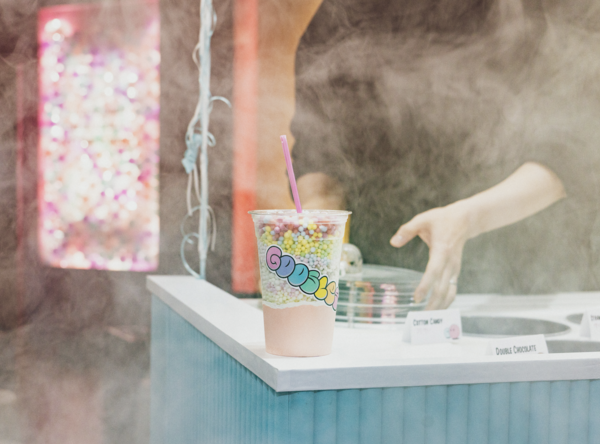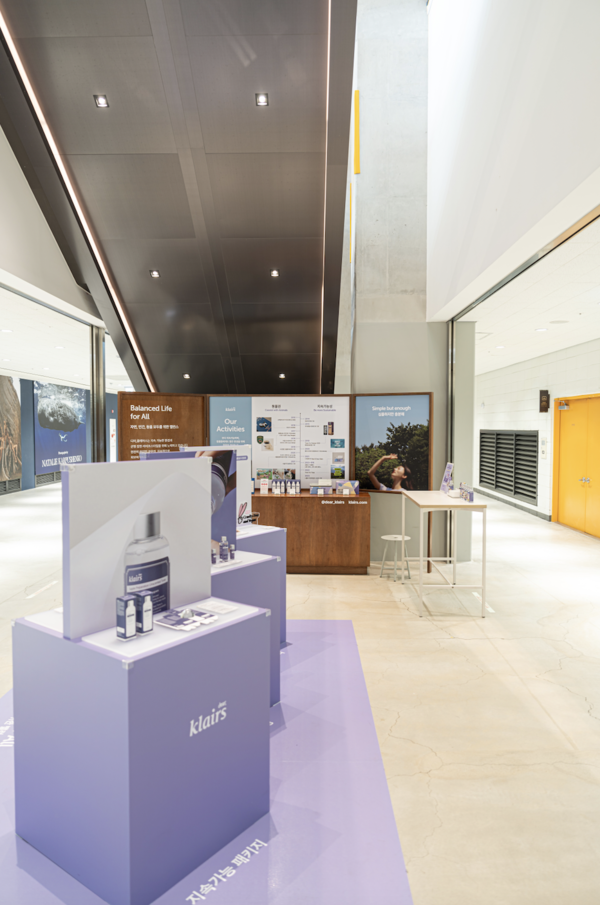Social media has become a inseparable part of our daily lives. The generation Z, referring to people born in mid 1900s to 2000s, have become the main creators of social media and the leaders of social trends. As the saying, “A space with no colors dies” infers, people nowadays consume more than the mere product itself when they walk into a store. Instead, the atmosphere surrounding the product, or rather the experience provided to the consumers, has become a big part of offline consumerism. Although most of us do not acknowledge it, the power of space has become an essential factor for trending.
What is the power of space?
Trend Korea 2023, a book published annually by the Consumer Trend Center at Seoul National University, acknowledged the concept of the power of space. Trend Korea 2023 defines the power of space as the power to attract people and make them stay. Space can provoke a variety of mixed senses providing consumers with a unique adventure-like experience, or a pleasurable memory. The COVID-19 pandemic brought the threat of a “retail apocalypse,” which refers to an end to offline expenditure made in small quantities. In order to stop this from happening, companies have started to focus on the power of space, making immense expenditures to create a trendy commercial space. To do so, new commercial tactics such as offline pop- up stores and unique concept stores have emerged.
The fundamentals of the power of space lie in “experience economy.” This is a theory that highlights the increasing importance of the individual experience in the business field. This theory stresses providing a pleasantly special experience beyond daily lives. In order to do so, it is important for businesses to analyze the needs of their customers in detail. By providing a space where customers can make unique memories and socialize with people who share common interests, businesses can acquire brand loyalty. The network based on shared experience can strengthen the emotional bond between customers and the brand.

Professor Jeon In-su, an honorary professor at the Department of the Business Administration of Hongik University, explains that the power of space lies in the ability to distinguish itself from other spaces, which is in other words, the personality of space. This is created by adding context to a space. One easy example is cafés in Korea. When customers visit a café, they do not go merely for beverages and desserts. The atmosphere of the space and the social experience of meeting people is an even bigger part. This is why many cafés in Korea try to distinguish themselves through unique concepts that go through the interior design, menu, and even cutlery. Cafés in Korea are closer to a space for cultural consumption rather than a catering service.
How is it being used?
Personality of space can be created in different ways. For example, Gentle Monster, a luxury eyewear brand with a fashionable image, highlights their identity by providing their store with artistic context. In order to hone the kitschiness, its shops are uniquely designed. The product cannot be seen anywhere on the first floor of the shop. It is designed as an artistic space where exhibitions are held so that customers can take photos and experience the atmosphere. As the price of each product is quite high, many of the visitors do not make a purchase. However, the power of space draws people into the space, always keeping the shop crowded.
Adopting historical context is another excellent way to provide the personality of a space. Bunker of Light, Jeju is a tourist attraction on Jeju Island. It is an exhibition space where digital art is displayed. The bunker was originally a communication center during the war but was later transformed into a tourist attraction. Since it was a military facility, the space blocks light and sound from the outside, making it a perfect place for displaying digital art. The facility is hidden away, providing an experience of physically moving into a state of immersion for the audience. By using the name “Bunker,” the historic context of the space stays intact.
Moreover, cultural context can also cultivate the personality. The Bukchon Hanok Village is a cluster of Korean traditional houses in Seoul. Tourists can borrow Hanbok, the Korean traditional dress, and enjoy Korean traditional snacks such as rice cakes and cookies. A lot of traditional artisan goods are also available in the area, which makes it not only a tourist attraction for consuming Korean heritage, but also a place for locals to go for traditional goods. Tours are held which maximize the commercial activity within the area, making the village a prosperous place.
Additionally, natural spaces can have the power of space too. Before development and urbanization, swamps and forests used to be daily spaces. However, the scarcity of natural space made them a special space that gives people experiences outside of daily life. Nature itself became a content of cultural life; swamps became an attractive factor where people could gain unique and personal experiences. As a result of the power of space, many cities have reversed the urbanization trend and re-formed spaces of nature within the city. The Chenggyecheon, a stream that flows in Seoul, was restored to its original form as a natural space where people can rest in the 2000s.
Pop-up stores are another good example of places using the power of space. Pop-up stores are temporary spaces, set up in crowded places to promote products, just like an internet pop-up message. A lot of companies are setting up pop-up stores in crowded places such as Seongsu or Gangnam. Pop-up stores are distinctive in that unlike the name, the main purpose is not selling products. There are products offered at a discounted price or limited edition products that can only be purchased in the pop-up store. That is why pop-up stores usually end up in a deficit in the short term. Rather than product sales, more focus is put on the exhibiting and providing experience. As so, pop-up stores are more of an investment for the brand image in the long term.
Pop-up stores that use the power of space
Goosles, a newly launched ice cream brand, successfully held a pop-up store in Seongsu in April. Goosles sells bead ice cream in big cups. At their pop-up, they had an ice cream stand outside and set the inside as a place with a trendy atmosphere where customers could stay and take photos. Lee Seok-Chae, the founder of Goosles and Nam Ki-hun the event planner said that the main reason behind setting up a pop-up store was for the power of space. According to Nam, the target customers for Goosles are people in their 20s. Growing up, they used to have bead ice cream in small quantities at special places like theme parks or festivals. The pop-up store was set up as a festive atmosphere with music, a fog machine, and balloons in order to evoke their past experience. Re-creating the childhood memory of happiness was the main goal in setting up the pop-up store.

Klairs, a skincare cosmetics brand has also launched a pop-up store. As Klairs is a brand that promotes environmental sustainability and a healthy, balanced lifestyle, the main purpose of the pop-up store was returning empty product bottles for recycling. Although Klairs is a global brand with stores in 64 countries, it is not widely known in Korea. Pheobe Seo of Klairs said that the main purpose of the pop-up store was to nurture a community within the brand’s fan- base. By providing meaningful experiences to potential fans, they can establish a positive image of Klairs.

The personality of space will act as an important factor in determining competitiveness in the market. Even if the experience itself is not relevant to the product’s utility, the unique memory related to the brand itself will influence consumers’ choices. Therefore, the spatial experience has become more significant than the product itself. The current trend of the market shows that the number of spaces individualized for the taste of a small pool of consumers will increase. The quality of experience and inspiration that consumers can gain will become an important point for marketers to consider when organizing offline spaces.

